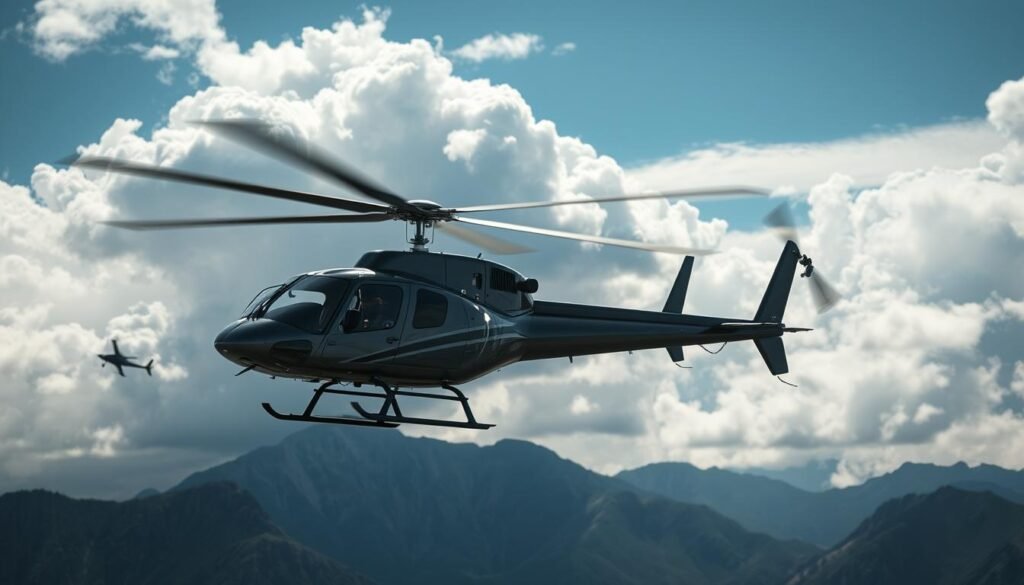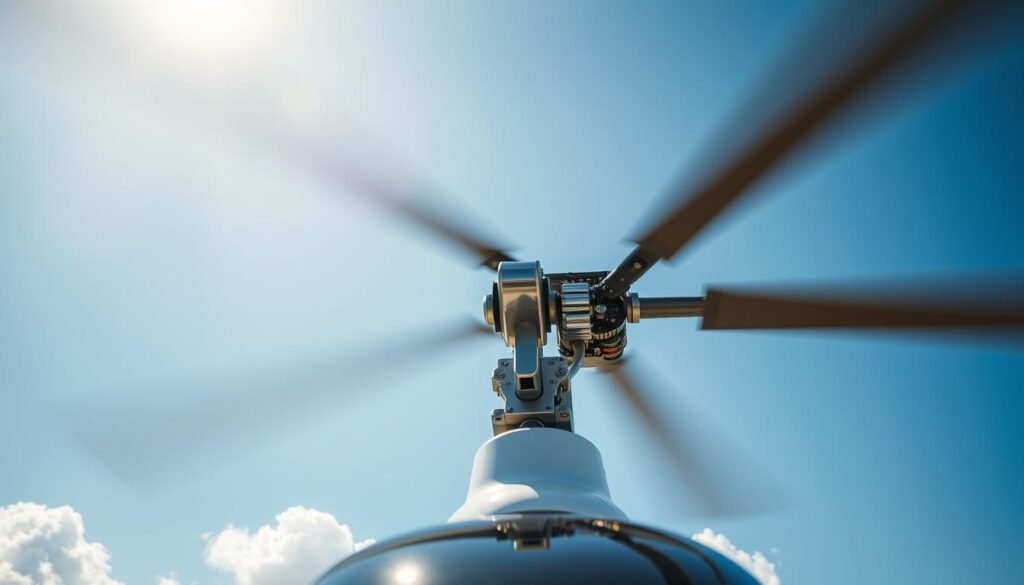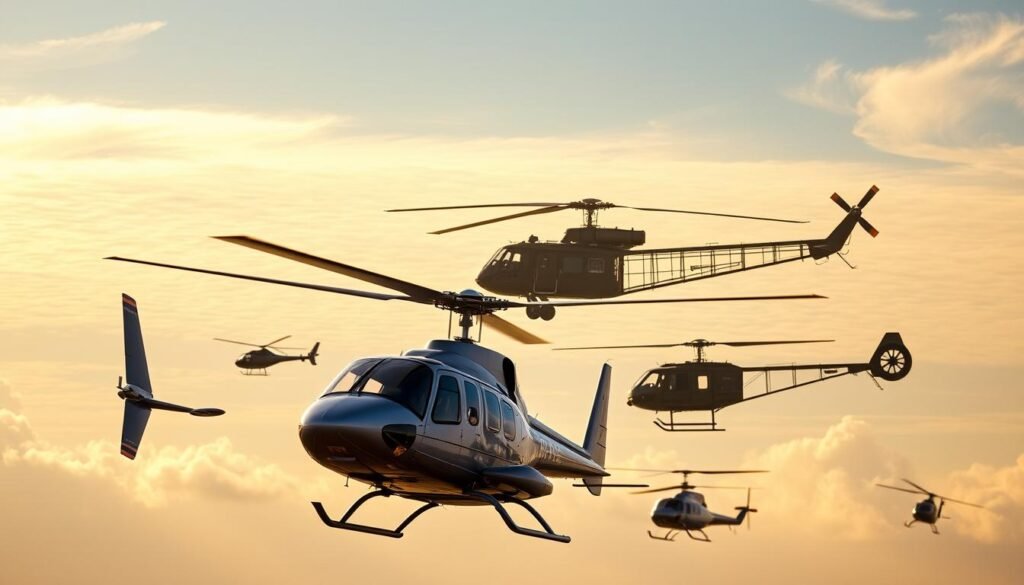Helicopters, with their unique ability to take off vertically, hover in place, and maneuver in all directions, have revolutionized aviation in ways that fixed-wing aircraft could never match. From their early invention to their modern applications in military, medical, and commercial sectors, helicopters have become a symbol of versatility and innovation in the skies. This article dives deep into the evolution of rotary-wing aircraft and explores how they transformed aviation forever.
Early Concepts of Rotary-Wing Flight
The concept of rotary-wing flight dates back to ancient civilizations, with early sketches of vertical flying machines seen in Chinese and European designs. Notably, Leonardo da Vinci’s 15th-century “aerial screw” laid the groundwork for future innovations. Da Vinci’s sketch was an early exploration into the principles of flight that would later become central to helicopters.
In the 19th century, inventors like Sir George Cayley and Thomas Edison experimented with early rotary-wing designs. However, it wasn’t until the 20th century that the dream of vertical flight truly began to materialize.
The Breakthrough: Igor Sikorsky’s VS-300
One of the most pivotal moments in helicopter history was the creation of the VS-300 by Igor Sikorsky in 1939. Sikorsky, a Russian-American aviation pioneer, designed this helicopter with a single main rotor and a small tail rotor for stability—an arrangement still widely used today. This innovative design allowed for vertical takeoff, hovering, and forward flight, providing unparalleled control in the air.
The Sikorsky R-4, derived from the VS-300, became the world’s first mass-produced helicopter in 1942. The R-4 was used extensively by the U.S. military during World War II, primarily for search and rescue missions. Its success marked the true beginning of the helicopter’s role as a versatile machine capable of handling challenging conditions.
Helicopters in Military and Rescue Operations
The post-World War II era saw rapid advancements in helicopter technology. By the time of the Korean War (1950-1953), helicopters were being used for MEDEVAC operations, where they airlifted wounded soldiers from the battlefield to medical facilities. The ability of helicopters to land in tight spots and evacuate individuals quickly revolutionized military rescue operations. One of the most iconic helicopters of this era was the Bell H-13 Sioux, often seen ferrying injured soldiers to safety.
The Vietnam War further demonstrated the helicopter’s battlefield importance. The Bell UH-1 “Huey” became a symbol of the war, used for troop transport, medical evacuation, and air assaults. Its versatility in rugged terrain and hostile environments solidified the helicopter’s critical role in military operations.
Helicopters in Civilian Aviation
While helicopters were making waves in the military, they were also transforming civilian aviation. In the 1950s and 1960s, helicopters began to be used in various commercial roles. Helicopters were deployed for search and rescue missions, coastal patrols, agricultural spraying, and firefighting.
One of the most recognizable helicopters in civilian aviation is the Sikorsky S-58, which was used in search and rescue operations, oil rig transport, and even as a VIP transport for President Dwight D. Eisenhower. The S-58 demonstrated the helicopter’s growing potential in non-military sectors, from executive travel to disaster relief.
In urban environments, helicopters also found their place. Helicopter tours became popular in tourist-heavy cities, allowing people to view landmarks like the Statue of Liberty, Grand Canyon, and Niagara Falls from the air. These helicopters provided a new perspective on travel and leisure.
Technological Advancements: Pushing the Boundaries
As helicopter technology advanced, so did their applications. The introduction of turbine engines in the 1950s, first seen in the Sud Aviation Alouette II, dramatically improved helicopter performance. Turbine engines were more powerful, reliable, and lighter than piston engines, allowing helicopters to fly farther, higher, and with greater payloads.
In the 1970s, helicopters like the Boeing CH-47 Chinook and Sikorsky CH-53 were designed for heavy lifting. These helicopters could transport large equipment, vehicles, and troops over long distances, making them essential for both military and civilian operations, including disaster relief and construction.
Technological advancements in avionics and composite materials have continued to push helicopters’ capabilities. Modern helicopters are equipped with cutting-edge navigation systems, autopilot, and advanced safety features that allow for precise control, even in extreme weather conditions.
The Role of Helicopters in Modern Aviation
Helicopters today play a vital role across a variety of industries:
- Emergency Medical Services: Helicopters serve as air ambulances, saving lives by quickly transporting patients from accident sites to hospitals. The speed and flexibility of helicopters are often the difference between life and death in critical situations.
- Search and Rescue: From mountain rescues to offshore recovery operations, helicopters are indispensable in search and rescue missions due to their ability to hover and operate in inaccessible areas.
- Law Enforcement: Helicopters are frequently used in law enforcement for aerial surveillance, pursuits, and search operations.
- Firefighting: Helicopters equipped with water buckets or tanks are critical in fighting wildfires, especially in remote regions.
- Tourism: Helicopter tours offer passengers breathtaking views of natural wonders and cityscapes that are otherwise impossible to see from the ground.
- Construction and Heavy Lifting: Helicopters like the Sikorsky S-64 Skycrane are used to transport heavy loads to areas where traditional ground transport is difficult or impossible.
The Future of Helicopters: What’s Next?
The future of helicopters looks promising, with innovations focused on improving efficiency, reducing environmental impact, and enhancing safety. Electric and hybrid-electric helicopters are already in development, aimed at reducing the carbon footprint of rotary-wing aircraft. Additionally, unmanned aerial vehicles (UAVs) or drone helicopters are being explored for both military and commercial use, offering the possibility of remote-controlled or autonomous flight.
Advancements in vertical takeoff and landing (VTOL) technology are also pushing the boundaries of what helicopters can do, with companies like Bell and Airbus working on new designs that blend helicopter and fixed-wing aircraft features for greater speed and efficiency.
Conclusion
The evolution of helicopters has forever changed the landscape of aviation. From early concepts and military rescue missions to modern advancements in civilian travel and emergency services, helicopters have proven to be among the most versatile and important aircraft in the world. As technology continues to advance, helicopters will undoubtedly play an even greater role in shaping the future of aviation, continuing to push the limits of what’s possible in vertical flight.
Related Articles
- How Helicopters Revolutionized Emergency and Rescue Operations
- Helicopter Milestones: Important Breakthroughs in Aviation History
- Iconic Helicopters That Shaped the Future of Aviation
- The Role of Helicopters in World War II and Beyond
More from This Category
- Top 10 Helicopter Facts You Probably Didn’t Know
- Military Helicopters Through History: Key Models and Their Impact
- How Helicopters Work: The Science Behind Vertical Flight
- Who Invented the Helicopter? A Look at the Pioneers Behind Rotary Flight
- Helicopter Evolution: How Rotary-Wing Aircraft Changed Aviation Forever
- The Fascinating History of Helicopters: From Invention to Modern Aviation



